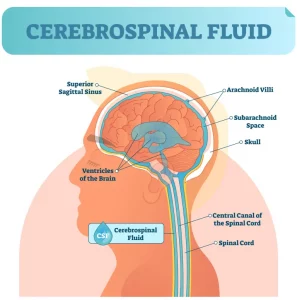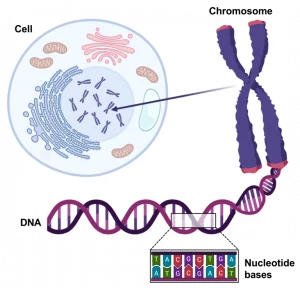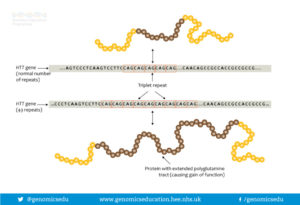
Snapshot: What is intelligibility?
Speech intelligibility refers to how many words can be correctly understood by a listener. For example, if someone says the phrase, “My name is John,” and a listener hears, “My Read More…
Support the Ataxia Research Drive before 12/31/2025 to fuel progress toward treatment development. DONATE NOW
A collection of resources for individuals and families affected by Spinocerebellar Ataxia Type 12 (SCA12).
Spinocerebellar Ataxia type 12 (SCA12) is caused by a genetic mutation that is passed on from parents to their children. SCA12 leads to problems with balance and coordination, as well as tremors. For complete information about symptoms, diagnosis, and treatment of Ataxia, visit our What is Ataxia? page. This page contains NAF’s resources that are specific to SCA12.
Sign up for our mailing list to stay up-to-date on Ataxia news.
Presented by Russell Margolis, MD
During this webinar, Dr. Margolis looked at the causes and symptoms of Spinocerebellar Ataxia type 12 (SCA12), the typical diagnostic journey for those affected, what to expect for clinical care, and an overview of current research into the disease.
NAF offers webinars on many topics to help you live better with Ataxia. Visit www.ataxia.org/webinars to find other helpful presentations.
Spinocerebellar Ataxia type 12 (SCA12) is a rare neurodegenerative disorder. It is caused by a CAG triplet repeat expansion in the PPP2R2B gene. SCA12 is very rare worldwide. However, SCA12 is very prevalent in Northern India. Approximately 16% of autosomal dominant ataxia patients in India have SCA12.
Like many other forms of Ataxia, SCA12 is marked by poor balance and coordination. In fact, the word Ataxia means incoordination. There can also be problems coordinating muscles that control speech and swallowing.
The first symptom for many people with SCA12 is tremors in the head and arms. These tremors are called action tremors, they occur when muscles are being voluntarily used. Many people with SCA12 have neuropsychiatric symptoms, such as anxiety, depression, cognitive difficulties, and dementia.
Less common symptoms of SCA12 include vision problems, eye spams, muscle contractions, increased reflexes, Parkinson-like symptoms, and neuropathy.
SCA12 symptoms usually begin between the ages of 30 and 50. However, symptoms can begin as young as 8 years old and as late as 70 years old. The severity of symptoms also varies considerably, even within families.
SCA12 usually progresses very slowly. Lifespan generally is not shortened by the disease. Treatments such as mental health support, physiotherapy, occupational therapy, and speech-language therapy can significantly improve the lives of people with SCA12.
SCA12 is a genetic disorder which means that it is an inherited disease. The abnormal gene responsible for this disease is passed along from generation to generation by family members who carry it. Genetic diseases like SCA12 occur when one of the body’s 20,000 genes does not work properly. Genes are microscopic structures within the cells of our bodies that contain instructions for every feature a person inherits from his or her parents.
SCA12 is an autosomal dominant disease, meaning individuals of either sex are equally likely to inherit the gene and develop the disease. Each child of a person with SCA12 has a 50% chance of inheriting the gene that causes SCA12.
In the case of SCA12, it is caused by a mutation called a CAG repeat expansion in the PPP2R2B gene. Whether or not you develop SCA12 depends on how many repeats you have.
More repeats are associated with an earlier age of onset of symptoms. Unlike some other forms of ataxia caused by repeat expansions, SCA12 repeats do not tend to expand or increase in number between generations.
Gene tests can be performed for diagnostic purposes to determine what kind of Ataxia is within a person or family. Genetic testing also can be done, in some circumstances, even before there are symptoms to determine whether a person carries the abnormal gene or genes that cause Ataxia. This is called predictive or presymptomatic testing. A gene test also can be used to determine whether a fetus has an abnormal Ataxia gene. This is called prenatal testing. Anyone who is considering a predictive or prenatal test should consult with a genetic counselor to discuss the reasons for the test, the possible outcomes, and how those outcomes might affect the person emotionally, medically, or socially.
A neurologic examination can determine whether a person has symptoms typical of SCA12. This suspected diagnosis is then confirmed through brain imaging, such as MRI, and genetic testing to detect the presence of the abnormal gene that causes SCA12. A neurologist is often the most helpful specialist in recognizing symptoms and diagnosing the disease that causes Ataxia.
SCAsource provides Ataxia research news, directly from researchers to the Ataxia community. Visit SCAsource to see their full collection. Here is a collection of articles relevant to SCA12.

Speech intelligibility refers to how many words can be correctly understood by a listener. For example, if someone says the phrase, “My name is John,” and a listener hears, “My Read More…

Speech not only consists of the words we say, but how we say them. That “how” is what is called prosody: the pitch, loudness, and timing of speech. The term Read More…

Written by Ziyang Zhao Edited by Dr. Hayley McLoughlin A newly developed smartphone application will allow patients to assess ataxia at home. There’s an interesting problem in science that’s often Read More…

Public transit may not be the first thing that comes to mind when we think about the brain, but it’s a great way to understand how all the parts of Read More…

A gene is the basic physical unitof heredity. Every living cell contains genetic information that determines an organism’s development, form, and function. This genetic information is encoded by two macromolecules: Read More…

The information that allows the normal development and functioning of each human being is coded in DNA, which exists in all cells of the body. Several successive segments of DNA Read More…
